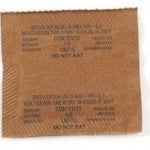Why You Need to Keep Electronic Components Dry with Desiccants
 In the electronics manufacturing and repair industries, moisture is a constant threat. Any amount of water can damage delicate components and delay assembly schedules. Protecting against moisture, however, requires much more than a roof overhead and not allowing drinks near electrical parts. Kimco Distributing Corp. provides businesses with dry cabinets to provide comprehensive moisture protection.
In the electronics manufacturing and repair industries, moisture is a constant threat. Any amount of water can damage delicate components and delay assembly schedules. Protecting against moisture, however, requires much more than a roof overhead and not allowing drinks near electrical parts. Kimco Distributing Corp. provides businesses with dry cabinets to provide comprehensive moisture protection.
When seeking a system of moisture control, electronics companies have three main options. A simple solution for small components is to keep parts in moisture barrier bags, but these have several drawbacks. Moisture barrier bags are limited in size, and they often are left open for extended periods of time. When first purchased, nitrogen cabinets effectively reduce moisture. Over time, however, their seals break down and render them useless. For these reasons, many of Kimco Distributing Corporation’s clients prefer the third solution: dry cabinets.
 Kimco Distributor’s dry cabinets use a desiccant to reduce the humidity level in them. When the desiccant has too much moisture and can no longer eliminate water vapors, it is sealed off from the cabinet. A heater then dries the desiccant, releasing the excess moisture into the surrounding environment. With many 3M desiccants and Dr. Storage desiccator cabinets, this process takes about 45 minutes and must be completed every six hours. The specific time and frequency, though, varies from model to model.
Kimco Distributor’s dry cabinets use a desiccant to reduce the humidity level in them. When the desiccant has too much moisture and can no longer eliminate water vapors, it is sealed off from the cabinet. A heater then dries the desiccant, releasing the excess moisture into the surrounding environment. With many 3M desiccants and Dr. Storage desiccator cabinets, this process takes about 45 minutes and must be completed every six hours. The specific time and frequency, though, varies from model to model.
When the desiccant is dried, trace amounts of moisture seep back into the cabinet. On some models, the relative humidity rises by as much as four percent. Even with this minor issue, dry cabinets are the best solution Kimco Distributing has for keeping electrical components dry over long periods of time. They are effective, reliable, economical to operate and environmentally friendly solutions.







































































































































































